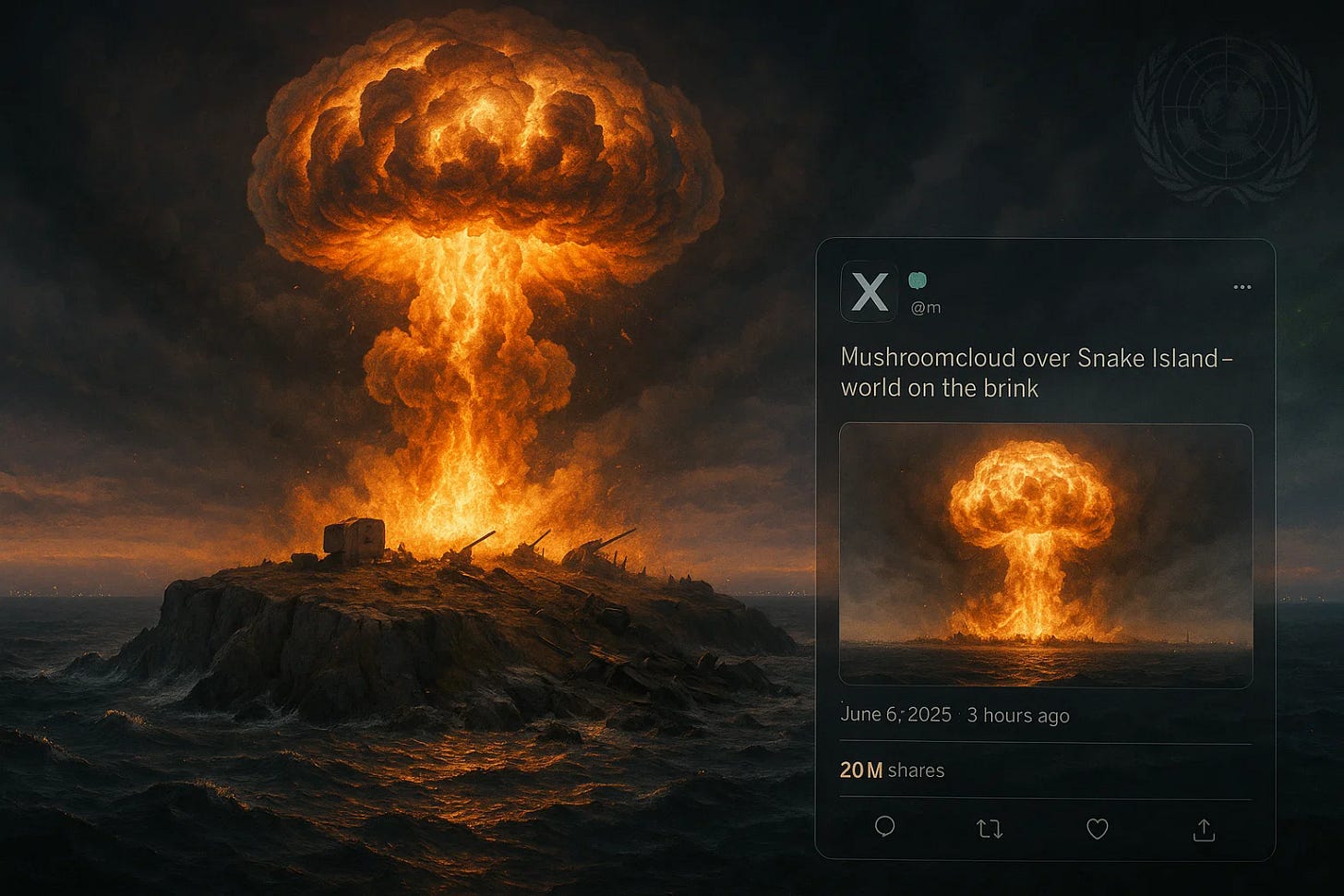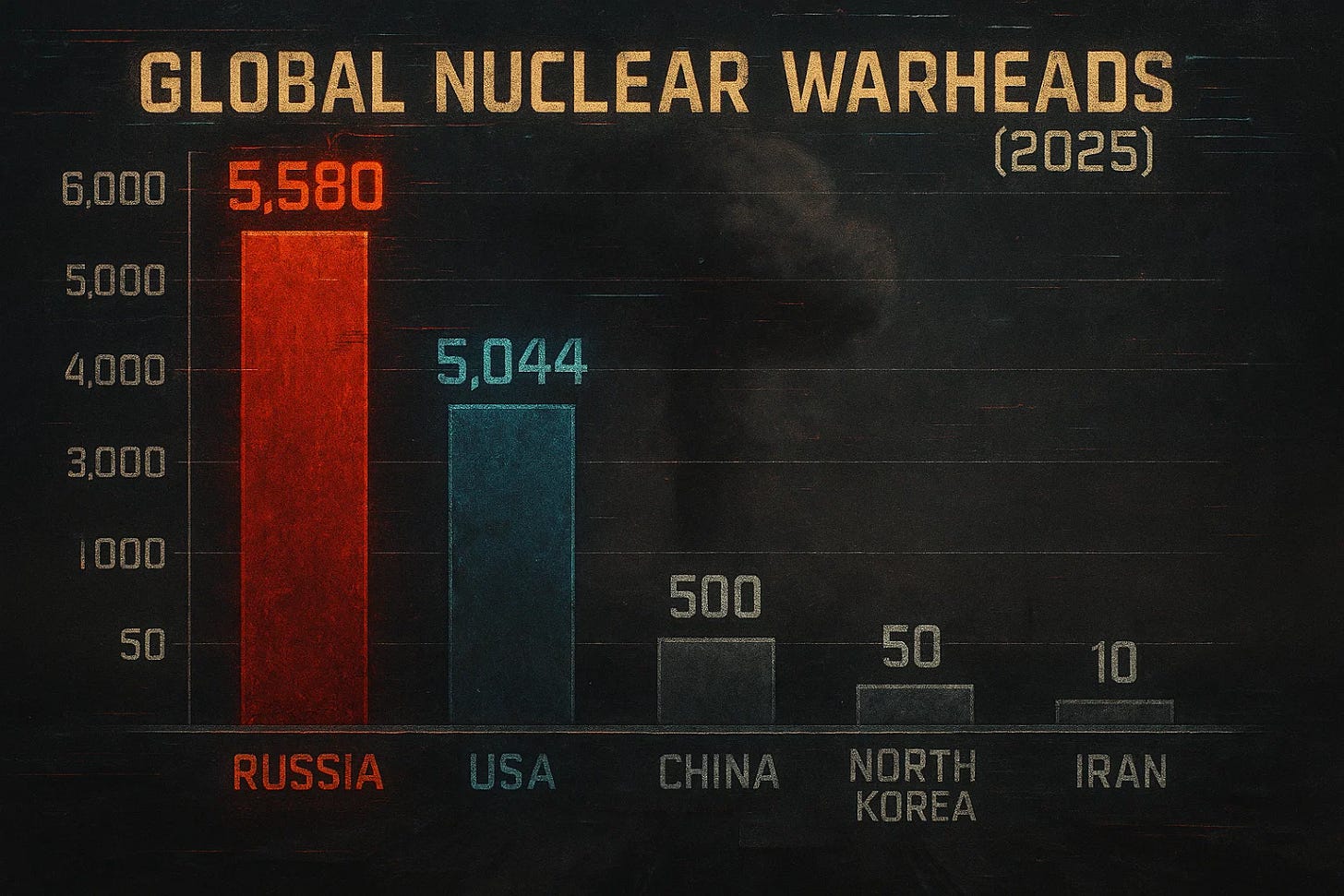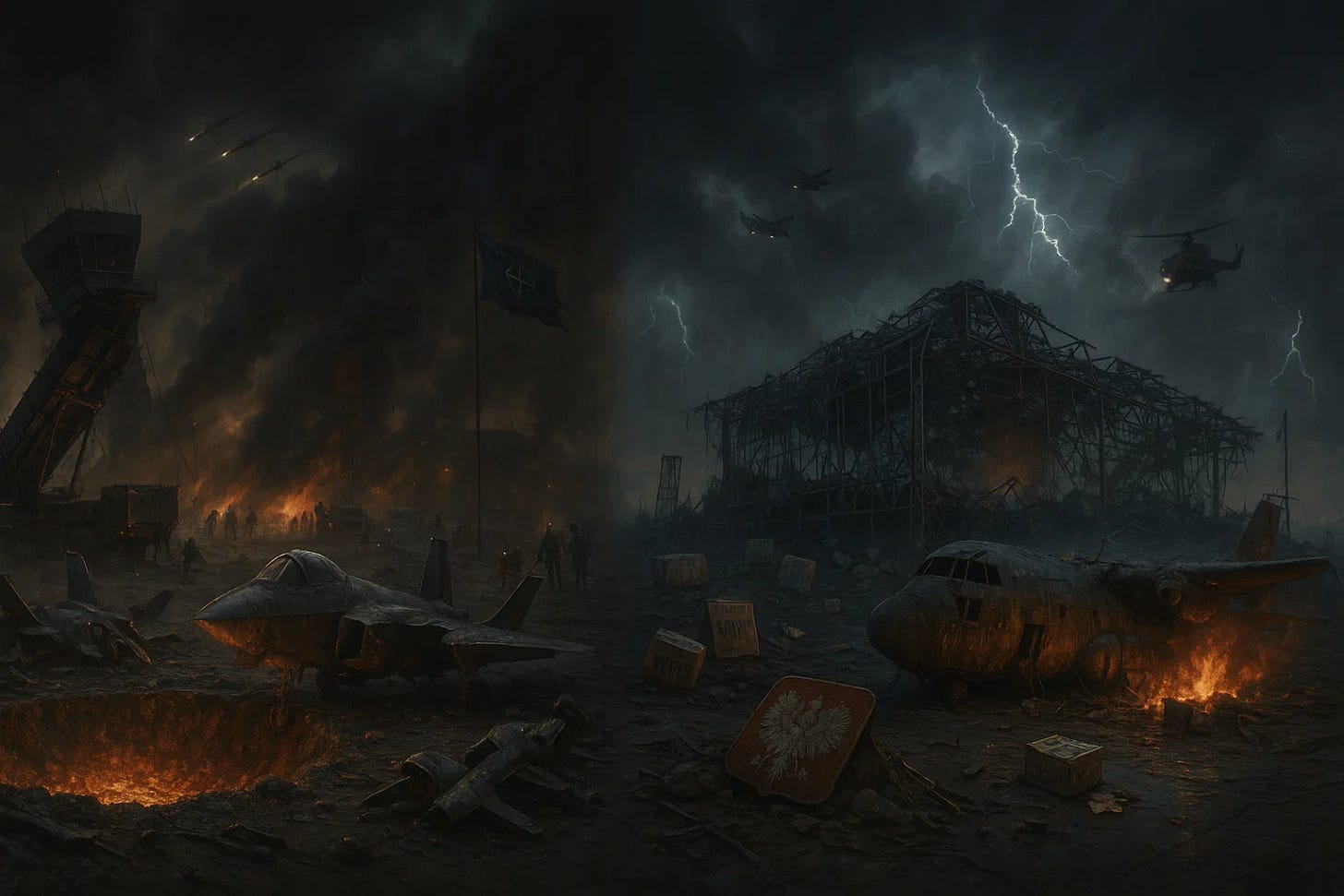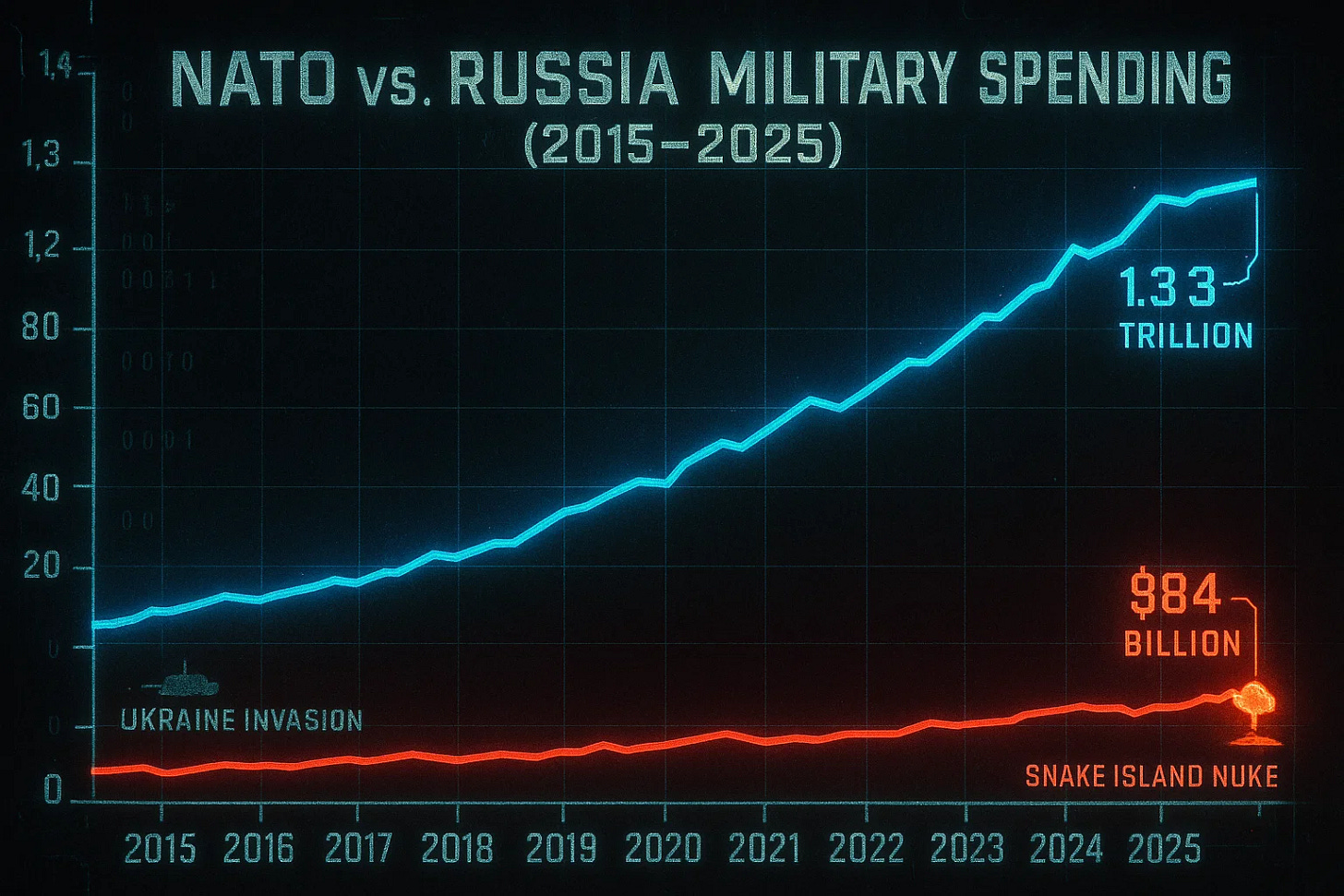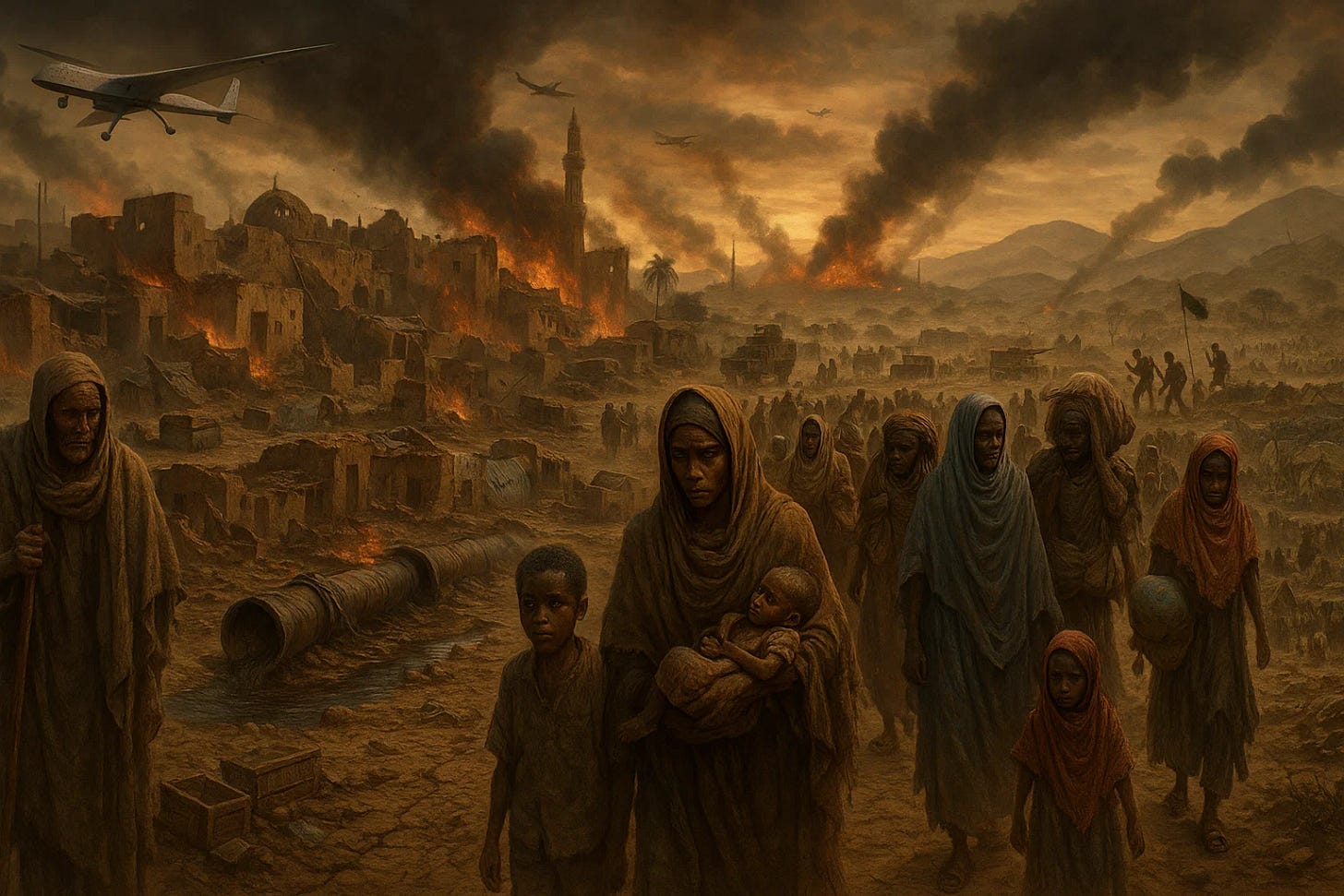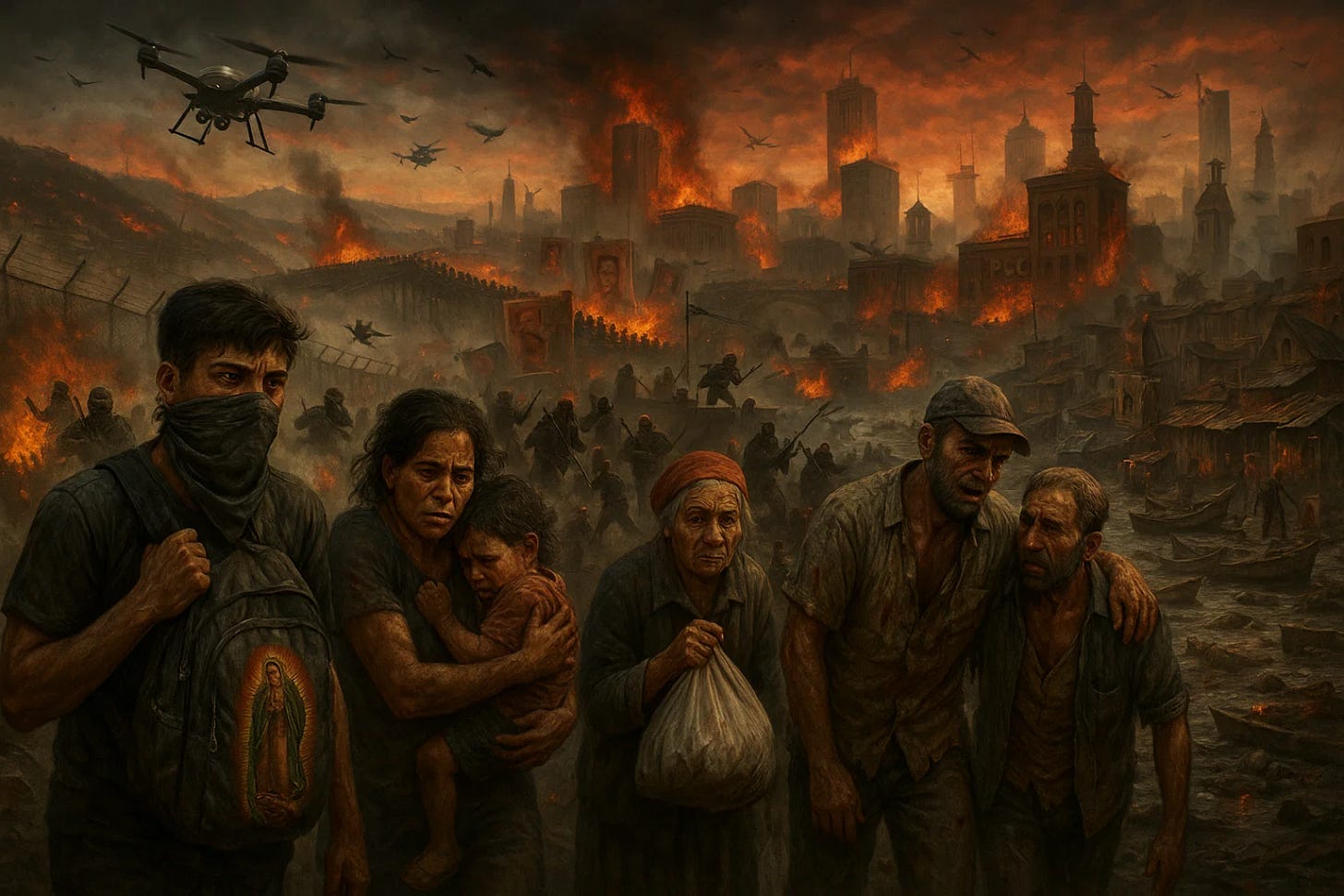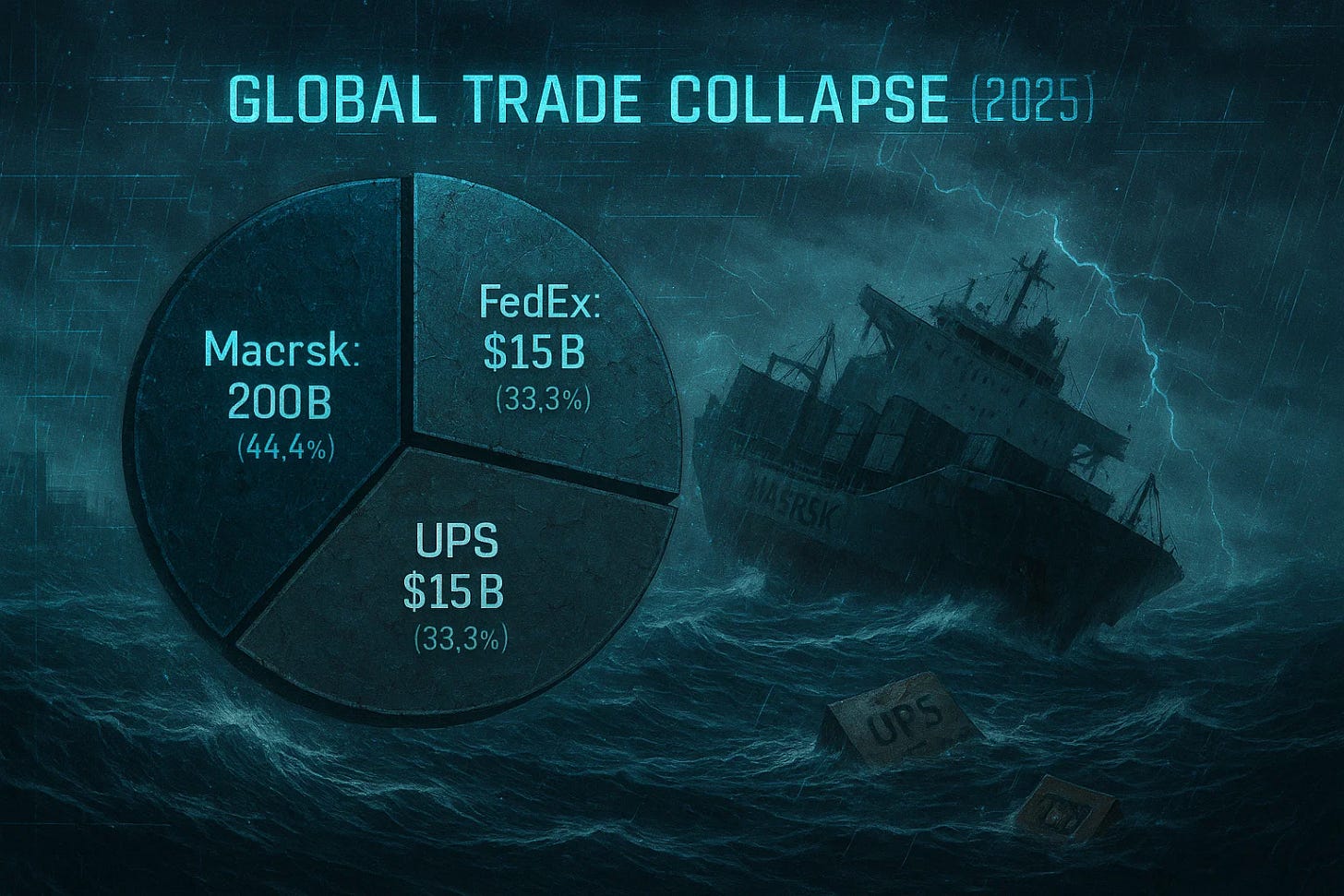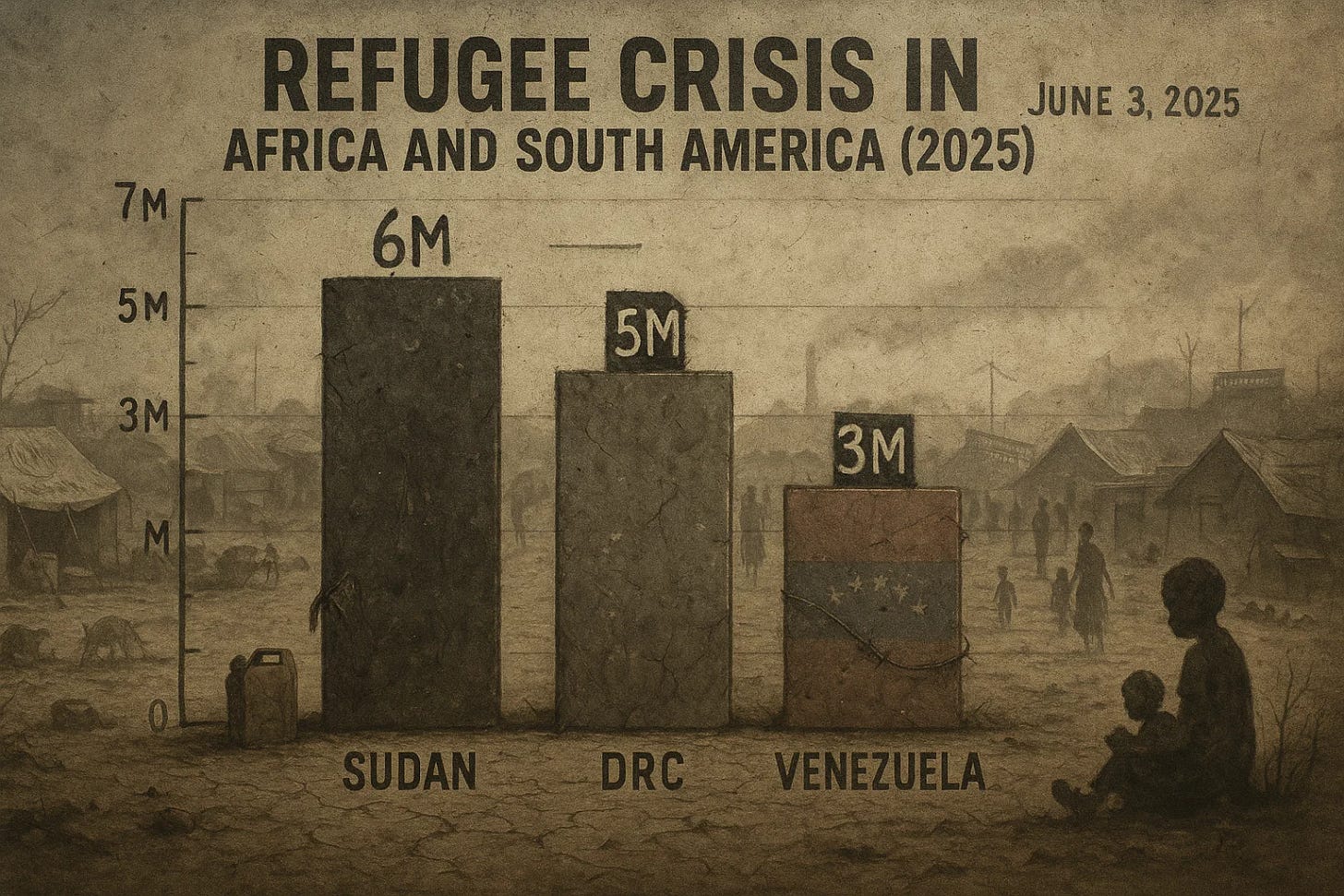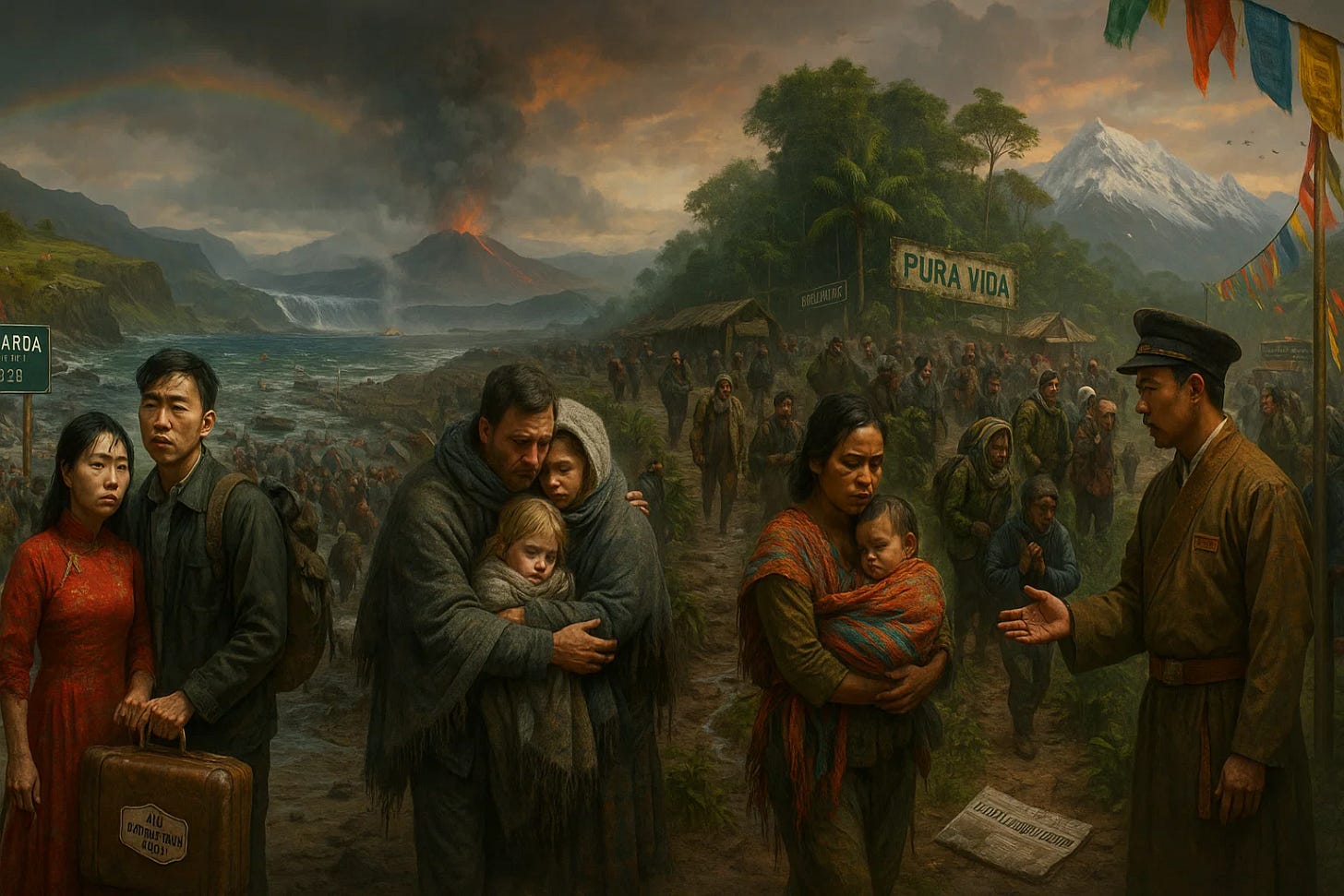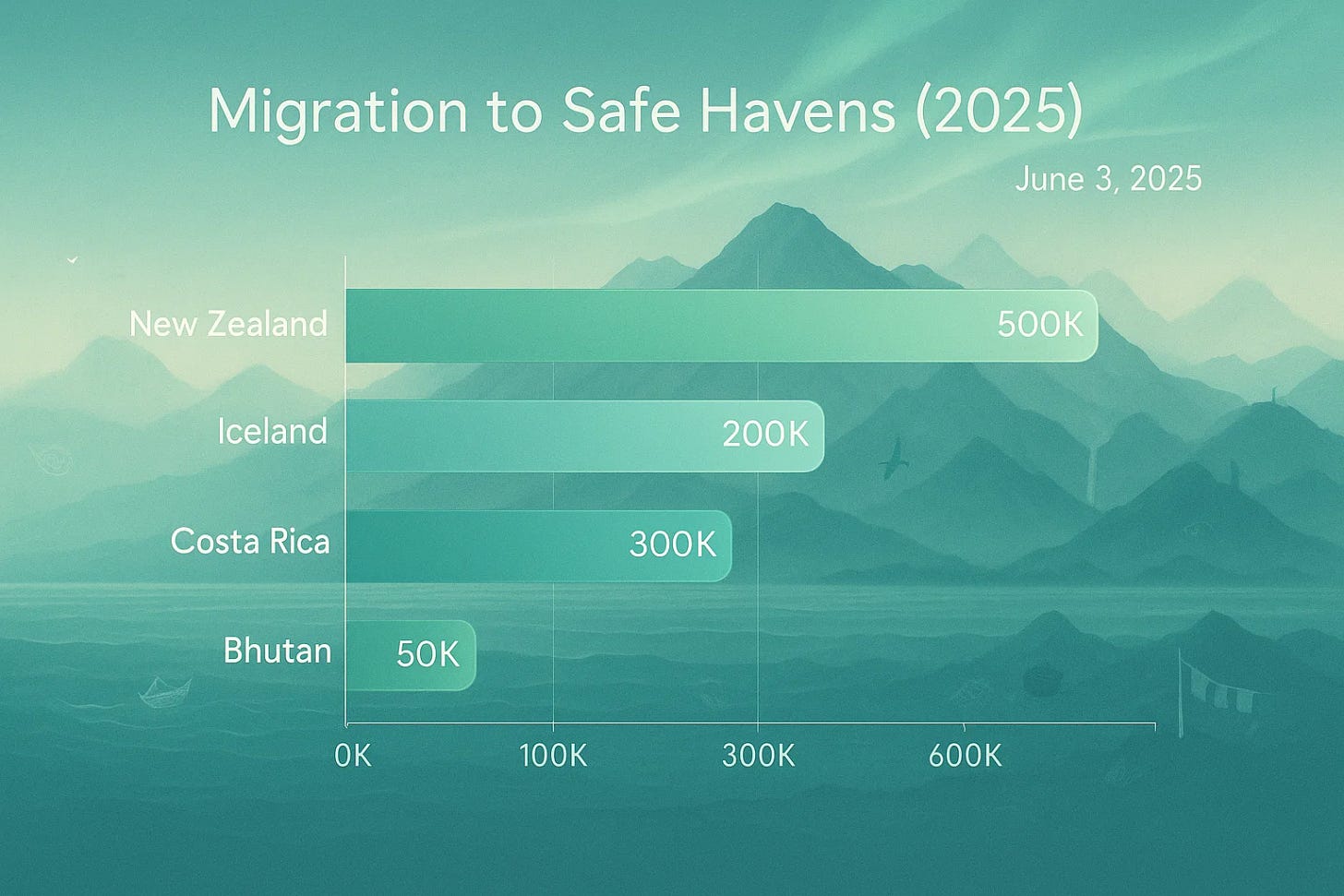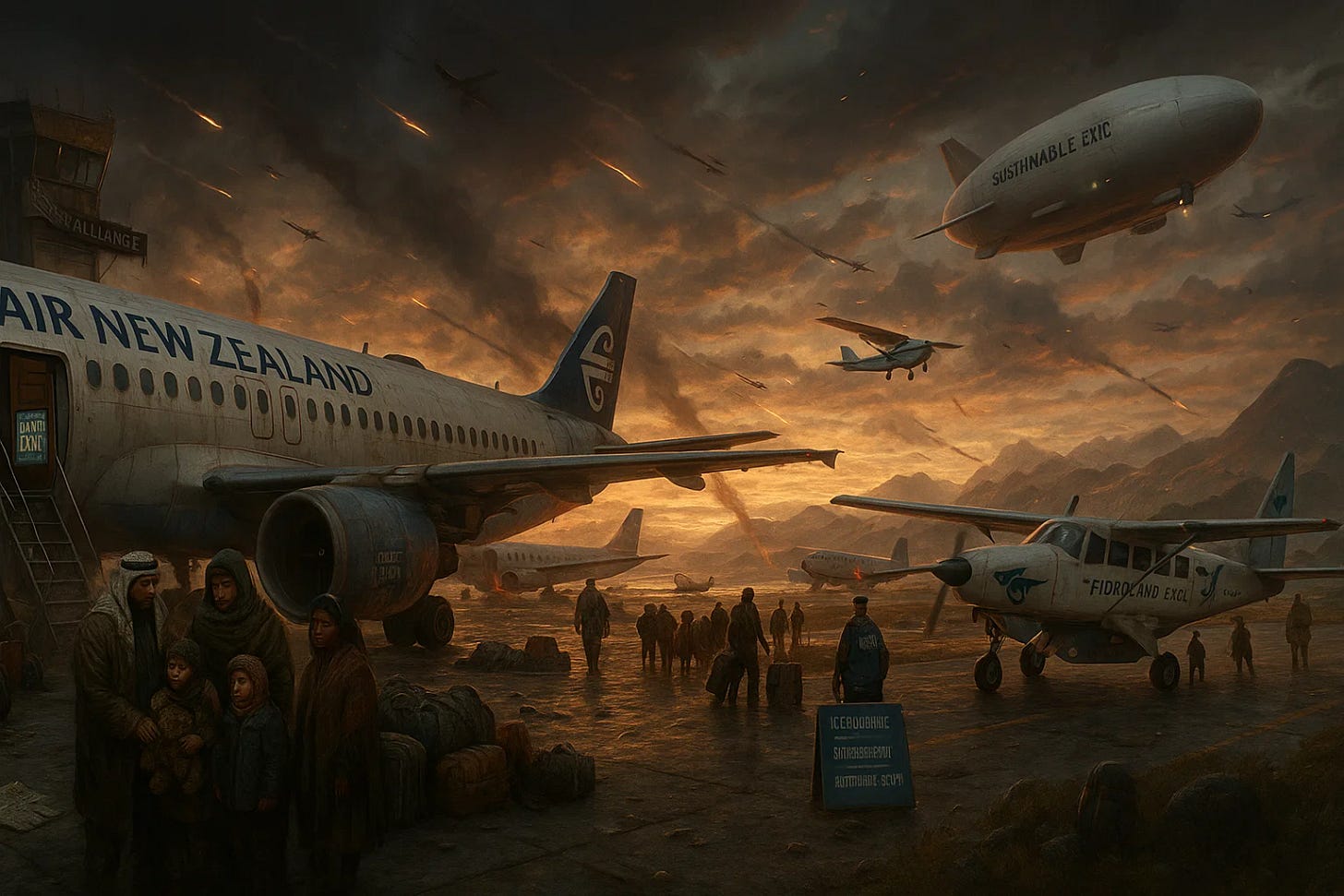World War III Begins: A Speculative Domino Effect
This article is inspired by a chilling X post I found—a vivid thread from a vanity profile imagining a world spiraling into chaos. The scenario sets a date, June 6, 2025, just days after the latest escalations we’re seeing now. But this isn’t about a specific day—it’s about the catastrophic domino effect that could unfold if humanity crosses an unthinkable line. I don’t believe this, nor do I want it. This is a reflection of what some fear is coming, especially with tensions boiling over as we speak. I’m diving into this to explore what might happen if the worst begins. Let’s pray, hope, and work with our leaders to stop this nightmare. Demand focus on de-escalation and peace. The stakes are everything.
To understand the tensions driving this fear, X accounts like @VigilantFox, which recently posted, “We’re officially on the brink of World War 3—and no one’s trying to stop it,” offer raw, unfiltered takes on global conflicts. @WIONews provides updates on NATO’s moves, like lifting restrictions on offensive weapons for Ukraine, while @CrisisGroup warns of flashpoints like the Korean Peninsula. These sources highlight the stakes we’re facing today.
Phase 1: The Spark That Ignites the Abyss
The X post’s vision begins with a devastating act: Russia drops a 15-kiloton tactical nuclear warhead on Snake Island, Ukraine—a tiny Black Sea outpost that’s been a defiant symbol since 2022. The date, June 6, 2025, comes just three days after the latest real-world escalations. On June 2, Ukraine and Russia engaged in one of the largest drone battles of their conflict, with 355 attack drones and nine cruise missiles launched by Russia, according to the Ukrainian air force. A day earlier, two bridges in Russian regions bordering Ukraine were blown up, killing seven and injuring 69, per Russian officials.
In this speculative scenario, the nuclear strike isn’t about Kyiv alone—it’s a challenge to NATO, the U.S., and the West: We’ll use nukes first. Dare to respond. The blast kills 250 Ukrainian troops, destroys a NATO surveillance post, and sends radioactive fallout drifting toward Romania and Bulgaria. X posts from Odesa, shared 20 million times in three hours, capture a mushroom cloud glowing against the horizon, sparking global panic. The U.N. Security Council convenes, but its resolutions are meaningless, especially after recent failures to broker peace.
Russia’s Rosatom, controlling 40% of global uranium enrichment, prepped the warhead in a secret Siberian bunker, evading even China’s intelligence. Elon Musk, whose Starlink satellites stream the blast live, tweets: “This is humanity’s point of no return. We must de-escalate now.” Tesla’s stock, already shaky after recent geopolitical tensions, plummets 20%, and SpaceX pauses its $200 billion Mars program. Jeff Bezos’ Blue Origin, tied to Pentagon contracts, faces a 15% valuation cut as defense budgets shift. Apple halts production in China, citing “geopolitical instability.”
The nuclear stakes are staggering. Per the Stockholm International Peace Research Institute (SIPRI), Russia holds 5,580 warheads in 2025, with 1,500 on high alert. The U.S. has 5,044, China 500, North Korea 50, and Iran’s rumored 10 are unverified. One spark, and the world burns.
Chart: Global Nuclear Arsenal Snapshot (2025)
Russia’s arsenal looms large, a ticking threat as tensions spike.
Phase 2: NATO’s Fragile Defenses Crumble
Within 18 hours, Russia escalates, building on its recent aggression. On May 26, 2025, NATO scrambled fighter jets after Russia’s long-range missile strikes on Ukraine, per web sources. Now, in this scenario, Kinzhal hypersonic missiles strike NATO’s Ramstein Air Base in Germany and Poland’s Rzeszów-Jasionka Airport. Ramstein, hosting 15,000 U.S. troops, loses 4,000 personnel. The Polish airport, a key hub for Ukraine aid, is rubble. Lockheed Martin’s $428 million F-35s are reduced to scrap. RTX Corporation’s Patriot systems fail to intercept the Kinzhals, exposing NATO’s vulnerabilities.
NATO invokes Article 5, but the alliance is strained. On June 3, European nations lifted restrictions on offensive weapons for Ukraine and increased defense spending, per @WIONews on X. Germany’s defense minister warned Russia might attack NATO within four years. In the scenario, Germany delays mobilization, France deploys only 2,000 troops, and Turkey stalls. Boeing’s stock drops 25%, its $38 billion defense portfolio under scrutiny. X trends like #NATOIsDead surge with 30 million posts in 24 hours.
The U.S. has 1.3 million active-duty troops, but only 450,000 are combat-ready, per the Department of Defense. Russia’s 1.1 million troops, hardened in Ukraine, exploit the gap. NATO’s 3.5 million personnel are overstretched—Germany at 180,000, Britain at 75,000, France at 200,000.
Graph: NATO vs. Russia Military Spending (2015–2025)
NATO’s $1.3 trillion budget (2024) dwarfs Russia’s $84 billion, but efficiency matters more.
Chart: NATO Troop Readiness (2025)
Only 1.2 million of NATO’s 3.5 million troops are combat-ready, compared to Russia’s 800,000 out of 1.1 million.
Phase 3: Global Chaos Erupts
Asia-Pacific: China and North Korea Seize the Moment
The nuke triggers a cascade. China blockades Taiwan, halting TSMC, which supplies 60% of global semiconductors. Apple, already on edge after halting China production, sees its stock drop 25%. Nvidia loses $600 billion in market cap. Intel and AMD shed a combined $300 billion. TSMC’s $560 billion valuation vanishes. In the South China Sea, Chinese warships clash with Philippine and Australian naval patrols, escalating tensions in a region already on edge due to frequent warplane encounters, as noted in web sources.
North Korea fires a Hwasong-17 ICBM over Japan, crashing near Hokkaido. Japan’s Nikkei 225 falls 18%. South Korea, fearing an attack, mobilizes its 500,000-strong army. Australia, a key U.S. ally, deploys its navy to the South China Sea, but its 60,000 troops are stretched thin across the vast Pacific. On X, @CrisisGroup warns, “The Korean Peninsula is a powder keg—any misstep could ignite a broader conflict.”
Middle East: Iran and Proxies Strike
Iran’s proxies—Hezbollah and the Houthis—strike Israel’s Haifa port and Saudi Aramco’s Ras Tanura facility, which processes 7 million barrels daily. Brent crude oil hits $450 per barrel, a 350% spike. ExxonMobil and Chevron ration fuel; U.S. gas prices soar to $18/gallon. In Syria, the recent fall of Assad’s regime (December 2024) fuels chaos. Hayat Tahrir al-Sham (HTS) struggles to govern, and Russian bases in Tartus and Latakia are attacked by rebels, cutting Moscow’s supply lines to Africa.
Africa: Existing Conflicts Explode
Africa, already home to over 35 non-international armed conflicts (NIACs) in countries like Burkina Faso, Mali, Nigeria, and Sudan, descends into deeper chaos. In Sudan, the Rapid Support Forces (RSF), backed by the UAE, advance on Khartoum, displacing 5 million more people. The conflict, which has killed 23,000 in 2023 alone, spills into Chad and South Sudan, where 1 million refugees destabilize local politics. South Sudan’s oil pipeline through Sudan shuts down, slashing its budget by 70%.
In the Sahel, Burkina Faso, Mali, and Niger see junta-led forces intensify attacks on jihadi groups like JNIM, but civilian deaths skyrocket—over 10,000 in 2024, per ACLED. Western interventions, already present in Nigeria and Somalia, collapse as resources are diverted to Europe. In the Democratic Republic of the Congo (DRC), Rwanda-backed rebels escalate fighting in the east, displacing 6 million people. The DRC’s 25.4 million in need of aid face starvation as supply lines break.
South America: Cartels and Instability Surge
South America, already grappling with criminal violence, sees conflicts worsen. In Mexico, the ongoing drug war (5,393 deaths in 2022) escalates as cartels exploit global chaos to seize border regions, clashing with U.S. forces. In Brazil, criminal gangs in São Paulo and Rio de Janeiro, responsible for high homicide rates (37% of global totals), launch coordinated attacks on government infrastructure, killing 2,000 in a week.
Venezuela’s political repression under Maduro intensifies, with 3 million more refugees fleeing to Colombia, sparking border clashes. Ecuador’s gang violence, noted as a growing concern in web sources, erupts into a public security crisis, with 1,500 deaths in Guayaquil alone.
Australia and the Pacific: Stretched Thin
Australia, a key U.S. ally, faces mounting pressure. Its 60,000-strong military deploys to the South China Sea, but domestic fears grow as North Korea’s ICBM tests threaten the region.
Papua New Guinea, already seeing tribal violence over land disputes, descends into anarchy as food imports halt, leading to 500 deaths in tribal clashes. Pacific Island nations like Fiji and Tonga, reliant on Australian aid, face economic collapse as Canberra diverts resources to defense.
Global Economic Fallout
Amazon’s logistics network collapses. Walmart and Target report 90% stock shortages. Maersk halts 95% of its fleet. The dollar loses 30%. Bitcoin hits $250,000 as Coinbase processes 15 million transactions daily. JPMorgan’s Jamie Dimon warns of “a financial apocalypse.” Supply chains implode. FedEx and UPS suspend 80% of operations. Food prices quadruple, per the FAO.
Chart: Global Oil Price Surge (2025)
Oil’s $450 price cripples economies.
Graph: Global Semiconductor Supply Chain Disruption (2025)
TSMC’s collapse triggers $1.5 trillion in tech losses.
Chart: Global Trade Collapse (2025)
Shipping halts cost $50 billion daily.
Chart: Refugee Crisis in Africa and South America (2025)
Millions are displaced as conflicts escalate.
Phase 4: Nuclear Dominos Fall
If Russia strikes a NATO city—Warsaw, Berlin, or London—the U.S. retaliates with Trident II missiles. Moscow becomes ash. Russia’s Sarmat ICBMs could then hit D.C., New York, Chicago, and Los Angeles. SIPRI estimates 60 million deaths in 24 hours, with 150 million more from fallout and famine.
U.S. defenses are weak. The Pentagon’s $886 billion budget funds Lockheed Martin’s $50 billion contracts, not missile shields. Northrop Grumman’s 44 interceptors can’t stop 5,000 warheads. China’s DF-41 missiles and North Korea’s KN-08s escalate the chaos. India and Pakistan, with 170 and 165 warheads, could join if tensions spill over, especially after recent de-escalation in Nagorno-Karabakh frees up resources for other conflicts.
Migration to Safe Havens
As nuclear fears grip the globe, people flee to perceived safe havens. New Zealand, often considered a refuge due to its isolation and stability (noted in web sources for attracting tourists and Chinese honeymooners), sees an influx of 500,000 refugees in a week, overwhelming its 5 million population. Iceland, with its 380,000 residents, becomes a sanctuary for 200,000 fleeing Europe, its geothermal energy sustaining small communities.
Costa Rica, known for its neutrality and lack of a standing army, hosts 300,000 from South America, though its infrastructure buckles under the strain. Bhutan, nestled in the Himalayas, attracts 50,000 seeking its peaceful isolation, but limited resources lead to border closures.
Chart: Migration to Safe Havens (2025)
Refugees flood perceived safe areas, straining resources.
Phase 5: Civilization’s Collapse
Global Breakdown
By the seventh day, EMP strikes fry Amazon Web Services, Google Cloud, and Microsoft Azure; the internet vanishes. General Electric’s turbines fail; 95% of U.S. power grids collapse, per the Department of Energy. NYPD and LAPD see 70% desertion rates. Looters overrun Walmart, Costco, and Kroger; 98% of urban stores empty in 96 hours.
Air Travel Paralysis
Air travel is paralyzed as ultra-managed skies become battlegrounds. Commercial aviation grinds to a halt—Air New Zealand, once a leader in safety innovation with its viral videos, grounds its 103-plane fleet as Star Alliance networks collapse. Lufthansa, Air Canada, and United report zero flights after recent incidents like a co-pilot’s mid-flight collapse and a crash landing in Halifax.
Keep reading with a 7-day free trial
Subscribe to The Most Important News to keep reading this post and get 7 days of free access to the full post archives.





